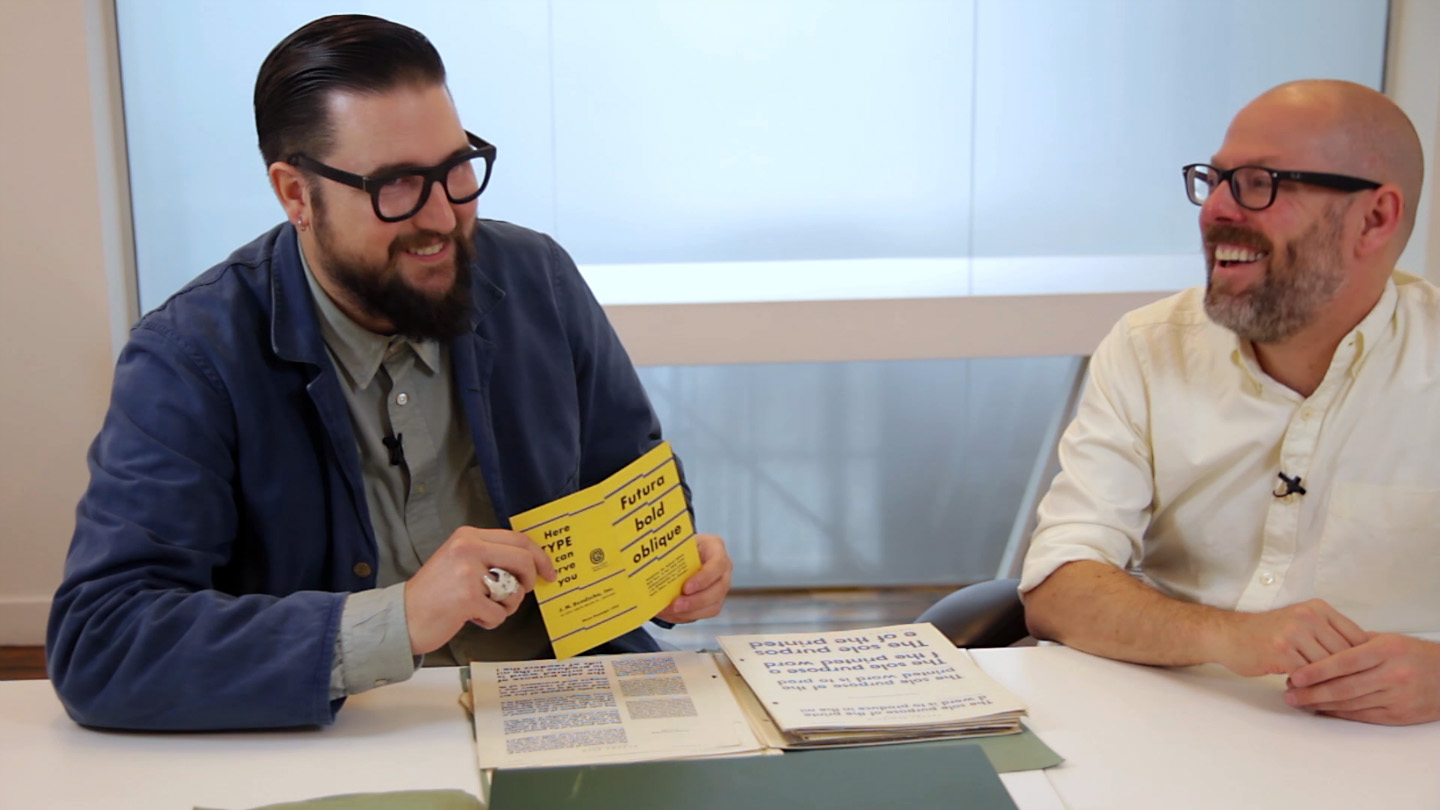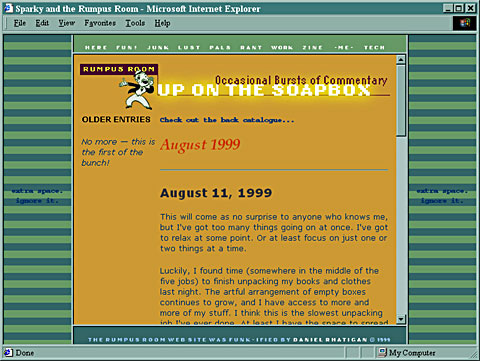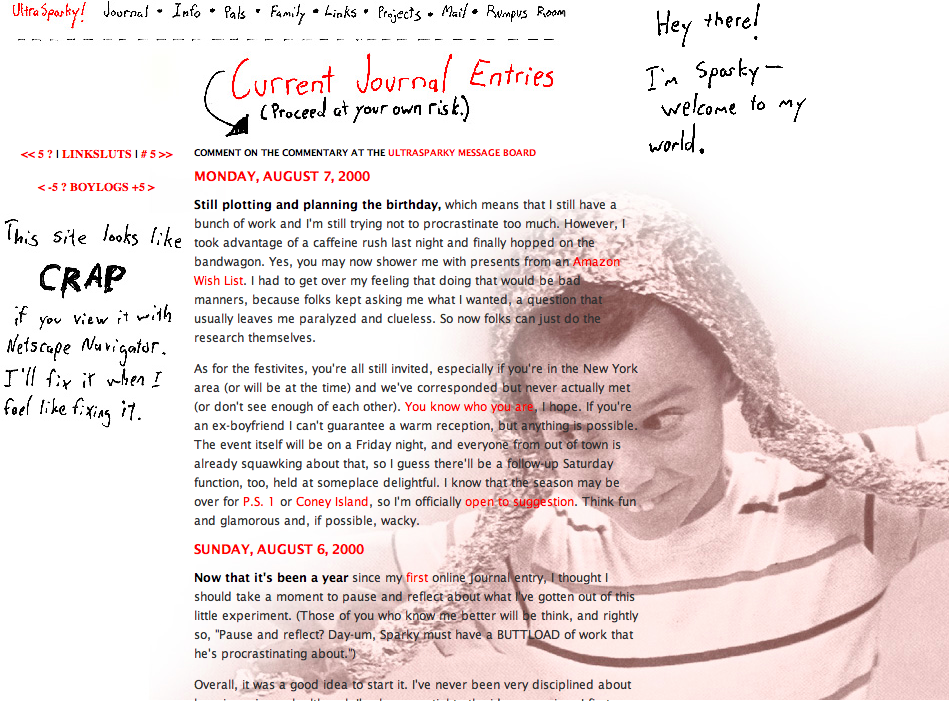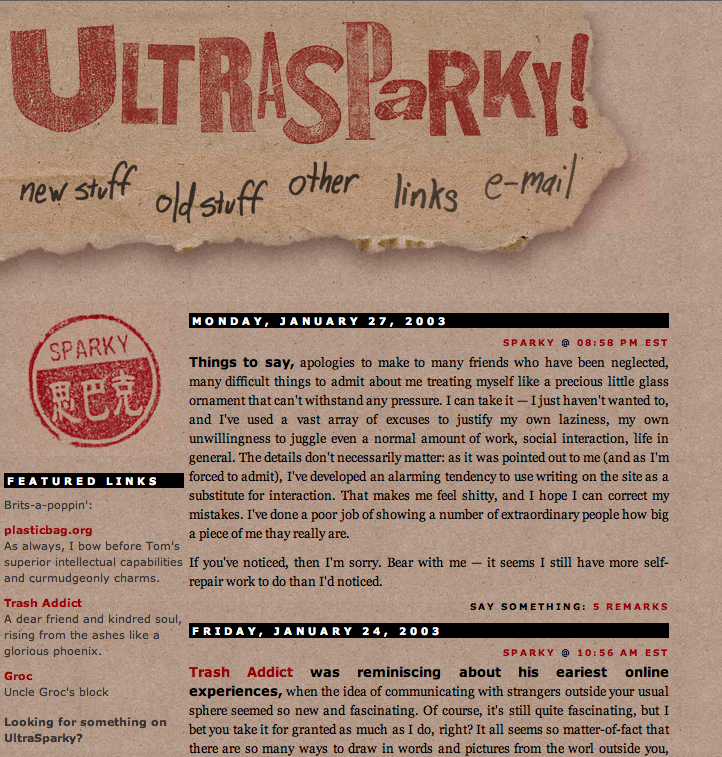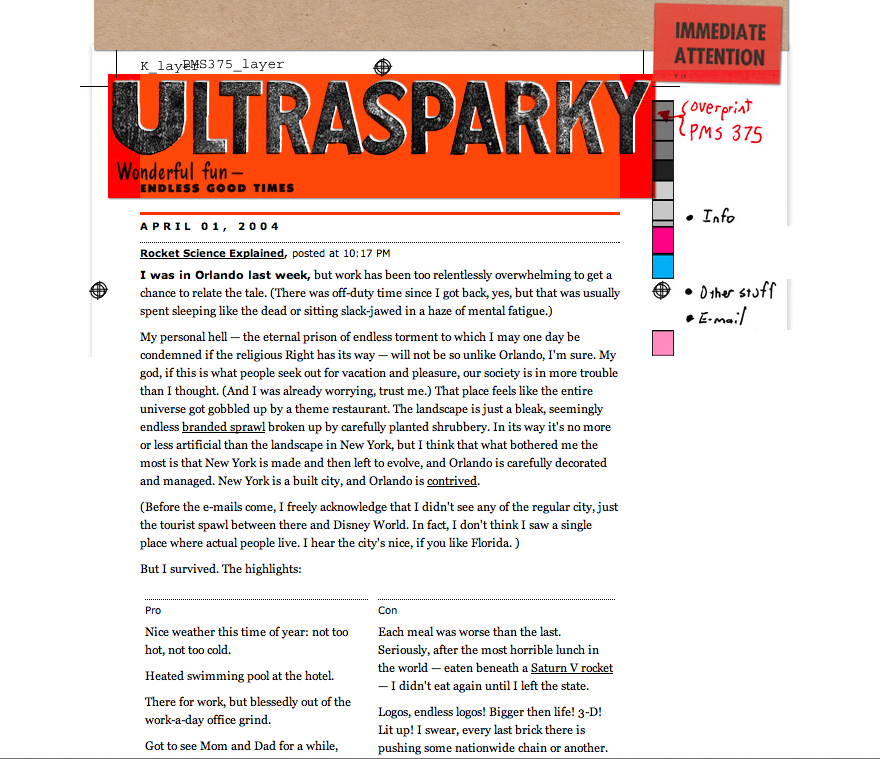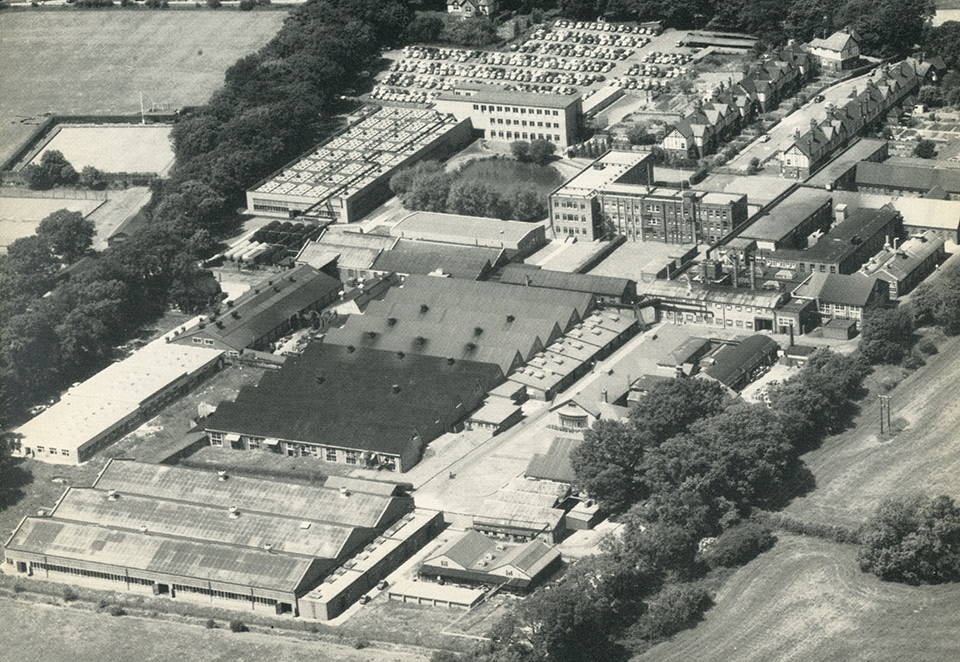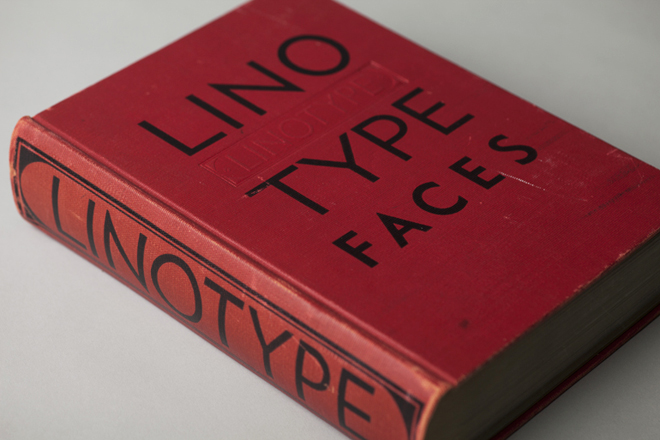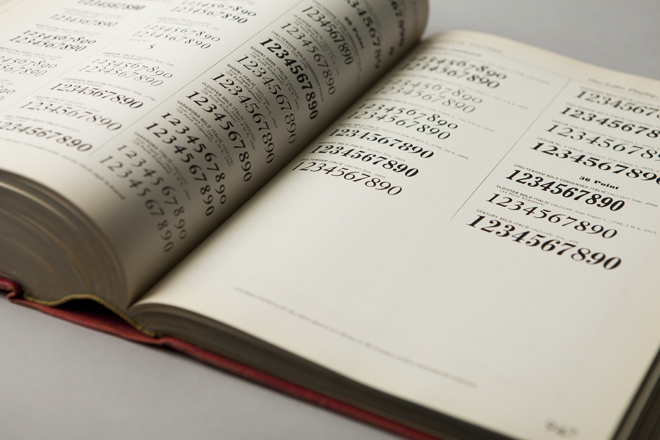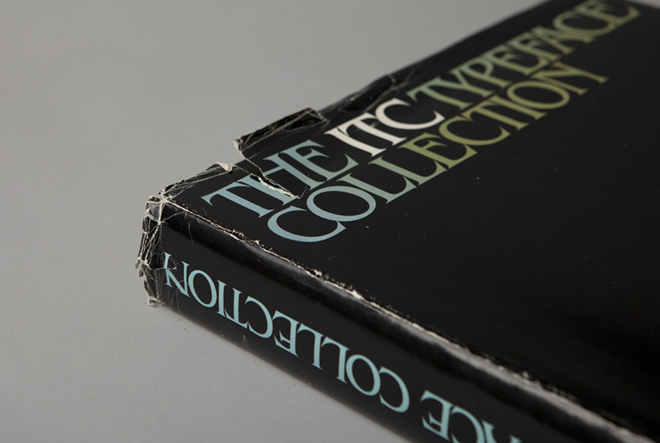A quickie, just so I can direct people to a few of my favorite sets of test material that I use in the earlier stages of working on a typeface design:
Adhesiontext
Essential — Miguel Sousa’s adhesiontext tool
Emil Ruder’s Spacing Test
This comes from this Typophile thread on spacing, and refers back to Emil Ruder’s Typographie published 1967. The idea is that the first group of words contain the more easily combined shapes, while the second sets contain trickier combinations, such as the accursed diagonals! The two sets of words should achieve pretty even overall color if a typeface is spaced pretty well. The Typophile thread presents the words in lists, but I find it easier to set paragraphs side-by-side and compare results as I work on spacing.
bibel malhabile modo biegen peuple punibile blind qualifier quindi damals quelle dinamica china quelque analiso schaden salomon macchina schein sellier secondo lager sommier singolo legion unique possibile mime unanime unico mohn usuel legge nagel abonner unione puder agir punizione quälen aiglon dunque huldigen allégir quando geduld alliance uomini
vertrag crainte screw verwalter croyant science verzicht fratricide sketchy vorrede frivolité story yankee instruction take zwetschge lyre treaty zypresse navette tricycle fraktur nocturne typograph kraft pervertir vanity raffeln presto victory reaktion prévoyant vivacity rekord priorité wayward revolte proscrire efficiency tritt raviver without trotzkopf tactilité through tyrann arrêt known
Kern King
Leslie’s Cabarga’s Kern King is another test I’ve been using for ages. It contains words that represent the most common character combinations. The list is biased heavily toward English, but it contains a bunch of foreign and made-up words just to be a little more thorough. Just in case the link ever breaks, I’ll simply quote it here:
How to Use Kern King
First, complete the spacing of your font in progress, but before adding kerning . . . paste [this text] into a word processing or layout program document, look at the words in lowercase, then as all caps, and see how they set. Make a list of all the problem pairs: those that are too far apart, and those that are too close together. Open up the font again in Fontographer or FontLab, make corrections to spacing and add kerning. Generate the font a second time. Check again. Repeat process until [spacing and] kerning seems perfect.
KERN KING Part 1:
lynx tuft frogs, dolphins abduct by proxy the ever awkward klutz, dud, dummkopf, jinx snubnose filmgoer, orphan sgt. renfruw grudgek reyfus, md. sikh psych if halt tympany jewelry sri heh! twyer vs jojo pneu fylfot alcaaba son of nonplussed halfbreed bubbly playboy guggenheim daddy coccyx sgraffito effect, vacuum dirndle impossible attempt to disvalue, muzzle the afghan czech czar and exninja, bob bixby dvorak wood dhurrie savvy, dizzy eye aeon circumcision uvula scrungy picnic luxurious special type carbohydrate ovoid adzuki kumquat bomb? afterglows gold girl pygmy gnome lb. ankhs acme aggroupment akmed brouhha tv wt. ujjain ms. oz abacus mnemonics bhikku khaki bwana aorta embolism vivid owls often kvetch otherwise, wysiwyg densfort wright you’ve absorbed rhythm, put obstacle kyaks krieg kern wurst subject enmity equity coquet quorum pique tzetse hepzibah sulfhydryl briefcase ajax ehler kafka fjord elfship halfdressed jugful eggcup hummingbirds swingdevil bagpipe legwork reproachful hunchback archknave baghdad wejh rijswijk rajbansi rajput ajdir okay weekday obfuscate subpoena liebknecht marcgravia ecbolic arcticward dickcissel pincpinc boldface maidkin adjective adcraft adman dwarfness applejack darkbrown kiln palzy always farmland flimflam unbossy nonlineal stepbrother lapdog stopgap sx countdown basketball beaujolais vb. flowchart aztec lazy bozo syrup tarzan annoying dyke yucky hawg gagzhukz cuzco squire when hiho mayhem nietzsche szasz gumdrop milk emplotment ambidextrously lacquer byway ecclesiastes stubchen hobgoblins crabmill aqua hawaii blvd. subquality byzantine empire debt obvious cervantes jekabzeel anecdote flicflac mechanicville bedbug couldn’t i’ve it’s they’ll they’d dpt. headquarter burkhardt xerxes atkins govt. ebenezer lg. lhama amtrak amway fixity axmen quumbabda upjohn hrumpf
KERN KING Part 2 — Most Common Initial Caps:
Aaron Abraham Adam Aeneas Agfa Ahoy Aileen Akbar Alanon Americanism Anglican Aorta April Fool’s Day Aqua Lung (Tm.) Arabic Ash Wednesday Authorized Version Ave Maria Away Axel Ay Aztec Bhutan Bill Bjorn Bk Btu. Bvart Bzonga California Cb Cd Cervantes Chicago Clute City, Tx. Cmdr. Cnossus Coco Cracker State, Georgia Cs Ct. Cwacker Cyrano David Debra Dharma Diane Djakarta Dm Dnepr Doris Dudley Dwayne Dylan Dzerzhinsk Eames Ectomorph Eden Eerie Effingham, Il. Egypt Eiffel Tower Eject Ekland Elmore Entreaty Eolian Epstein Equine Erasmus Eskimo Ethiopia Europe Eva Ewan Exodus Jan van Eyck Ezra Fabian February Fhara Fifi Fjord Florida Fm France Fs Ft. Fury Fyn Gabriel Gc Gdynia Gehrig Ghana Gilligan Karl Gjellerup Gk. Glen Gm Gnosis Gp.E. Gregory Gs Gt. Br. Guinevere Gwathmey Gypsy Gzags Hebrew Hf Hg Hileah Horace Hrdlicka Hsia Hts. Hubert Hwang Hai Hyacinth Hz. Iaccoca Ibsen Iceland Idaho If Iggy Ihre Ijit Ike Iliad Immediate Innocent Ione Ipswitch Iquarus Ireland Island It Iud Ivert Iwerks Ixnay Iy Jasper Jenks Jherry Jill Jm Jn Jorge Jr. Julie Kerry Kharma Kiki Klear Koko Kruse Kusack Kylie Laboe Lb. Leslie Lhihane Llama Lorrie Lt. Lucy Lyle Madeira Mechanic Mg. Minnie Morrie Mr. Ms. Mt. Music My Nanny Nellie Nillie Novocane Null Nyack Oak Oblique Occarina Odd Oedipus Off Ogmane Ohio Oil Oj Oklahoma Olio Omni Only Oops Opera Oqu Order Ostra Ottmar Out Ovum Ow Ox Oyster Oz Parade Pd. Pepe Pfister Pg. Phil Pippi Pj Please Pneumonia Porridge Price Psalm Pt. Purple Pv Pw Pyre Qt. Quincy Radio Rd. Red Rhea Right Rj Roche Rr Rs Rt. Rural Rwanda Ryder Sacrifice Series Sgraffito Shirt Sister Skeet Slow Smore Snoop Soon Special Squire Sr St. Suzy Svelte Swiss Sy Szach Td Teach There Title Total Trust Tsena Tulip Twice Tyler Tzean Ua Udder Ue Uf Ugh Uh Ui Uk Ul Um Unkempt Uo Up Uq Ursula Use Utmost Uvula Uw Uxurious Uzßai Valerie Velour Vh Vicky Volvo Vs Water Were Where With World Wt. Wulk Wyler Xavier Xerox Xi Xylophone Yaboe Year Yipes Yo Ypsilant Ys Yu Zabar’s Zero Zhane Zizi Zorro Zu Zy Don’t I’ll I’m I’se
Digits of pi
My favorite way to check figures as I work on them is to fill preview windows, test documents, etc with digits of pi. It’s a great way to look for gaps or dark spots in the overall color, and check for that tricky sweet spot between even color and clarity of individual numbers. Also a great way to compare blocks of tabular figures against blocks of proportional figures.
Pangrams
My most frequently visited page on Wikipedia is the multilingual List of pangrams page. It’s a great way to check that a design holds together once you start figuring out accent marks, or to try character combinations you might not think about on your own. I edited down the lists on that page to a briefer text that tests various languages using the Latin alphabet:
Catalan: Jove xef, porti whisky amb quinze glaçons d’hidrogen, coi! Young chef, bring whisky with fifteen hydrogen ice cubes, darn! Aqueix betzol, Jan, comprava whisky de figa. That idiot, Jan, was buying fig whisky. Danish: Høj bly gom vandt fræk sexquiz på wc. Tall shy groom won dirty sex quiz on W.C. Quizdeltagerne spiste jordbær med fløde, mens cirkusklovnen Walther spillede på xylofon. The quiz contestants ate strawberry with cream while Walter the circus clown played the xylophone. Dutch: Lynx c.q. vos prikt bh: dag zwemjuf! (Perfect pangram, 26 letters) Lynx , in this case fox. stings bra: hey swim teacher! Doch Bep, flink sexy qua vorm, zwijgt But Bep, thoroughly sexy of shape, keeps silent Sexy qua lijf, doch bang voor ’t zwempak Sexy of body, yet scared of the swimsuit Pa’s wijze lynx bezag vroom het fikse aquaduct Dad’s wise lynx piously observed the sturdy aqueduct. Filmquiz bracht knappe ex-yogi van de wijs Film Quiz startled handsome ex-yogi Several others: “Max boft: z’n vrouw is qua type degelijk”, “Lex bederft Uw quiz met typisch vakjargon”, “Sexy dame bezorgt chique volkje fijne wip”. Filipino: Ang buko ay para sa tao dahil wala nang pwedeng mainom na gatas. (Coconut is for people because there is not enough milk.) Pwede kang yumaman dahil sa bagong roleta. (You can be rich because of the new wheel.) Finnish: Törkylempijävongahdus — Muckysnogger booty-call. Albert osti fagotin ja töräytti puhkuvan melodian. Albert bought a bassoon and blasted a puffing melody. (Used in older versions of Word Perfect). French: Buvez de ce whisky que le patron juge fameux. Drink from this whisky, which the boss judges to be famous. Portez ce vieux whisky au juge blond qui fume. Go take this old whisky to the blond judge who smokes. Bâchez la queue du wagon-taxi avec les pyjamas du fakir. Tarpolin-up the taxi-railcar tail with the fakir’s pajamas. Voyez le brick géant que j’examine près du wharf. See the giant brig which I examine near the wharf. (The person is looking at a ship) Voix ambiguë d’un cœur qui au zéphyr préfère les jattes de kiwi. Ambiguous voice of a heart which prefers kiwis’ bowls to a zephyr. Monsieur Jack, vous dactylographiez bien mieux que votre ami Wolf. Mister Jack, you type much better than your friend Wolf. (Was used in the Swiss army to check the keyboard of typewritters before teletransmission) German: Sylvia wagt quick den Jux bei Pforzheim. Sylvia dares quickly the joke at Pforzheim. Franz jagt im komplett verwahrlosten Taxi quer durch Bayern. Franz chases in the completely shabby cab straight through Bavaria Victor jagt zwölf Boxkämpfer quer über den großen Sylter Deich. Victor chases twelve boxers across the great dam of Sylt (with umlauts and ß, each letter exactly once, according to the pre-1996 spelling rules): “Fix, Schwyz!” quäkt Jürgen blöd vom Paß. “Quick, Schwyz!” Jürgen squawks zanily from the pass. Falsches Üben von Xylophonmusik quält jeden größeren Zwerg. Wrong practising of xylophone music bothers every larger dwarf. Icelandic: Kæmi ný öxi hér, ykist þjófum nú bæði víl og ádrepa. If a new axe were here, thieves would feel increasing deterrence and punishment. Svo hölt, yxna kýr þegði jú um dóp í fé á bæ. A cow in heat with such a limp would admittedly keep silent about drugs in sheep on a farm. Italian: Quel fez sghembo copre davanti. That slanted fez covers the front. Ma la volpe, col suo balzo, ha raggiunto il quieto Fido. But the fox with her leap has reached the quiet Fido. (Without foreign letters; observe that “Fido” is a proper noun commonly given to dogs.) Quel vituperabile xenofobo zelante assaggia il whisky ed esclama: “Alleluja!” That blameworthy and zealous xenophobe tastes his whisky and says: “Alleluja!” Pranzo d’acqua fa volti sghembi. O templi, quarzi, vigne, fidi boschi! Che tempi brevi, zio, quando solfeggi. “Berlusconi? Quiz, tv, paghe da fame.” (Umberto Eco) “TV? Quiz, Br, Flm, Dc… Oh, spenga!” (Umberto Eco, 1979) Norwegian: Vår sære Zulu fra badeøya spilte jo whist og quickstep i min taxi. Our strange Zulu from the bathing Island did actually play whist and quickstep in my cab. Høvdingens kjære squaw får litt pizza i Mexico by. The chief’s dear squaw gets a little pizza in Mexico City. IQ-løs WC-boms uten hørsel skjærer god pizza på xylofon. IQ-less WC-bum without hearing cut good pizza on xylophone. Sær golfer med kølle vant sexquiz på wc i hjemby. Strange golfer with club won sex quiz on W.C. in hometown. Quizer om Canadiske wienerbrød i juni var fryktet av personer med xenofobi, derfor zappet de vinneren så hardt at de ødelagte æren sin. Quizzes about Canadian wiener breads in June was feared by individuals with xenophobia, so that is why the zapped the winner so hard that they damaged their honor. Portuguese: Um pequeno jabuti xereta viu dez cegonhas felizes. A curious little tortoise saw ten happy storks. Blitz prende ex-vesgo com cheque fajuto. Police arrested ex-cross-eye with fake check in a checkpoint. Gazeta publica hoje no jornal uma breve nota de faxina na quermesse. The journalists publish today at the newspaper a short note about the cleaning at the kirmiss. À noite, vovô Kowalsky vê o ímã cair no pé do pingüim queixoso e vovó põe açúcar no chá de tâmaras do jabuti feliz. At night, grandpa Kowalsky sees the magnet falling in the complaining penguin’s foot and grandma puts sugar in the happy tortoise’s date tea. Luís argüia à Júlia que «brações, fé, chá, óxido, pôr, zângão» eram palavras do português. Luís argued to Júlia that “big arms, faith, tea, oxide, to put, bee” were Portuguese words. Zebras caolhas no Java querem passar fax para moças gigantes de New York. One-eyed zebras in Java want to fax giant ladies from New York. Spanish: El veloz murciélago hindú comía feliz cardillo y kiwi. La cigüeña tocaba el saxofón detrás del palenque de paja. (Used in Windows as sample text) The quick Hindu bat was happily eating golden thistle and kiwi. The stork was playing the saxophone behind the straw arena. El pingüino Wenceslao hizo kilómetros bajo exhaustiva lluvia y frío; añoraba a su querido cachorro. The penguin Wenceslao did kilometres under exhaustive rain and cold; he longed for its dear puppy. Jovencillo emponzoñado de whisky: ¡qué figurota exhibe! Whisky-intoxicated youngster — what a figure he’s showing! Ese libro explica en su epígrafe las hazañas y aventuras de Don Quijote de la Mancha en Kuwait. That book explains in its epigraph the deeds and adventures of Don Quijote de la Mancha in Kuwait. Queda gazpacho, fibra, látex, jamón, kiwi y viñas. There are still gazpacho, fibre, latex, ham, kiwi and vineyards. Whisky bueno: ¡excitad mi frágil pequeña vejez! Good whisky, excite my frail, little old age! Swedish: Flygande bäckasiner söka hwila på mjuka tuvor. Flying snipes seek rest on soft tufts [of grass]. Yxskaftbud, ge vår WC-zonmö IQ-hjälp. Axe handle messenger, give our WC zone maiden IQ help. Gud hjälpe Zorns mö qvickt få byxa. God help Zorn’s maiden get trousers quickly.

